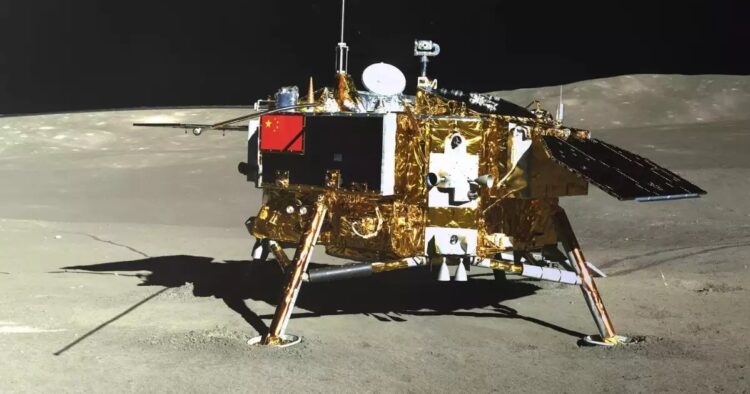A Chinese spacecraft successfully landed on the far side of the moon on Sunday. The mission’s goal is to collect soil and rock samples that could provide new insights into the differences between this less-explored region and the more familiar near side of the moon.
The landing module touched down at 6:23 am Beijing time in a massive crater known as the South Pole-Aitken Basin, according to the China National Space Administration (CNSA). This mission is part of China’s ambitious Chang’e moon exploration program, named after a Chinese moon goddess.
It is the sixth mission in the program and the second designed to bring back samples. The first, Chang’e 5, brought samples from the near side of the moon in 2020.
China’s moon missions are part of a broader space race involving the United States and other countries like Japan and Bharat. While the US remains the leader in space exploration, China has made significant strides, including putting its own space station in orbit and regularly sending crews there. China aims to put a person on the moon before 2030, potentially becoming the second nation to do so after the US.
The US is also planning to land astronauts on the moon again, for the first time in over 50 years. However, NASA recently pushed the target date back to 2026. Efforts to use private sector rockets for space missions have faced delays.
For instance, a planned launch of Boeing’s first astronaut flight was canceled due to last-minute computer issues. Similarly, a Japanese billionaire postponed his moon orbit plan due to uncertainties about SpaceX’s development of a mega rocket, which NASA also plans to use for its moon missions.
Details of China’s Current Mission
In the current Chinese mission, the lander is equipped with a mechanical arm and a drill. It will gather up to 2 kilograms of surface and underground material over about two days. An ascender atop the lander will then take the samples, stored in a metal vacuum container, back to another module orbiting the moon.
This container will be transferred to a re-entry capsule, which is expected to return to Earth around June 25, landing in the deserts of China’s Inner Mongolia region.
Missions to the moon’s far side are more challenging because this side does not face the Earth, making direct communication impossible. A relay satellite is needed to maintain communication. The terrain is also more rugged with fewer flat areas to land, adding to the difficulty.
This mission marks another significant achievement for China’s space program. By exploring the far side of the moon and bringing back samples, China hopes to contribute valuable scientific knowledge and reinforce its growing presence in space exploration.

















Comments